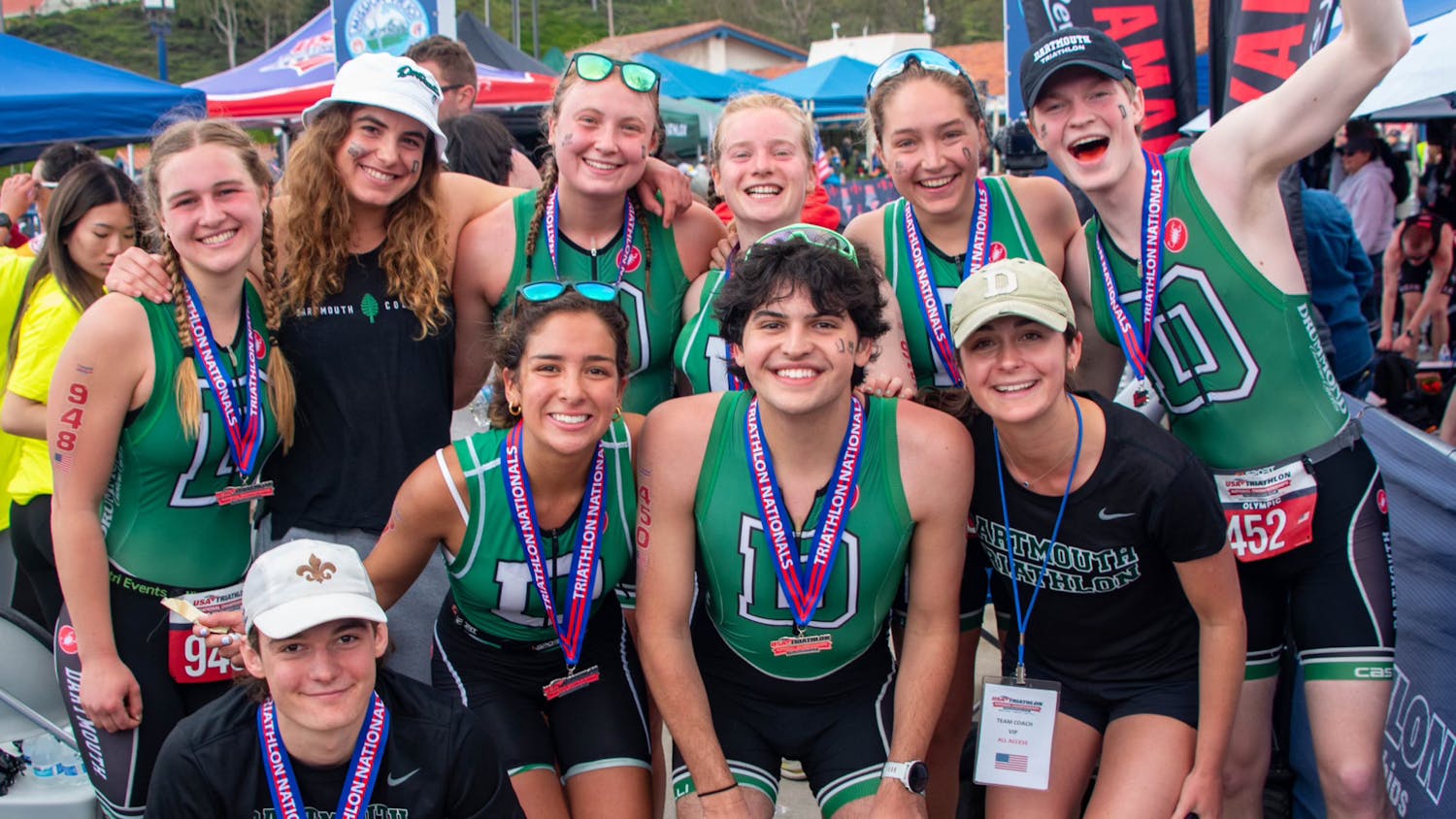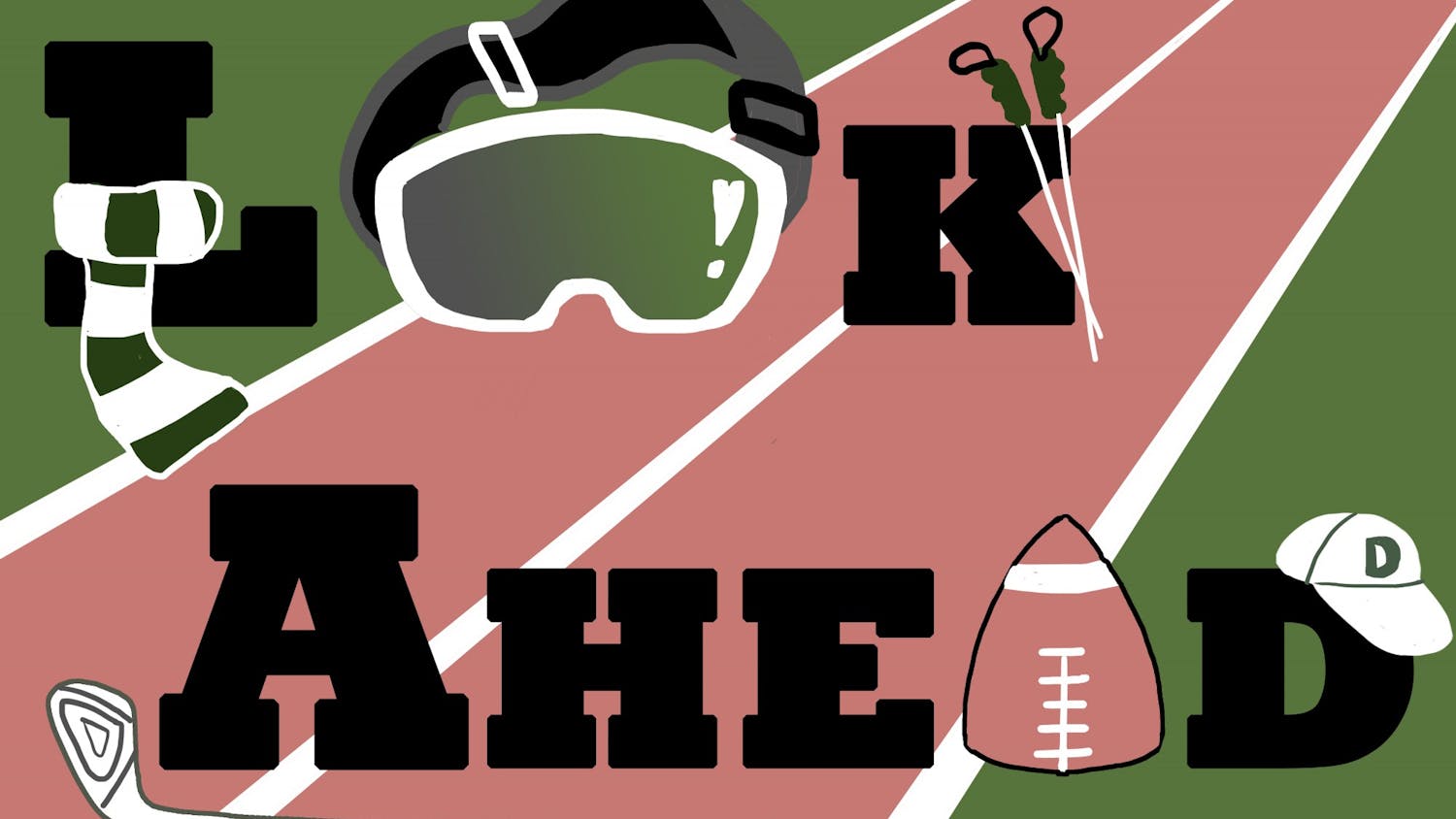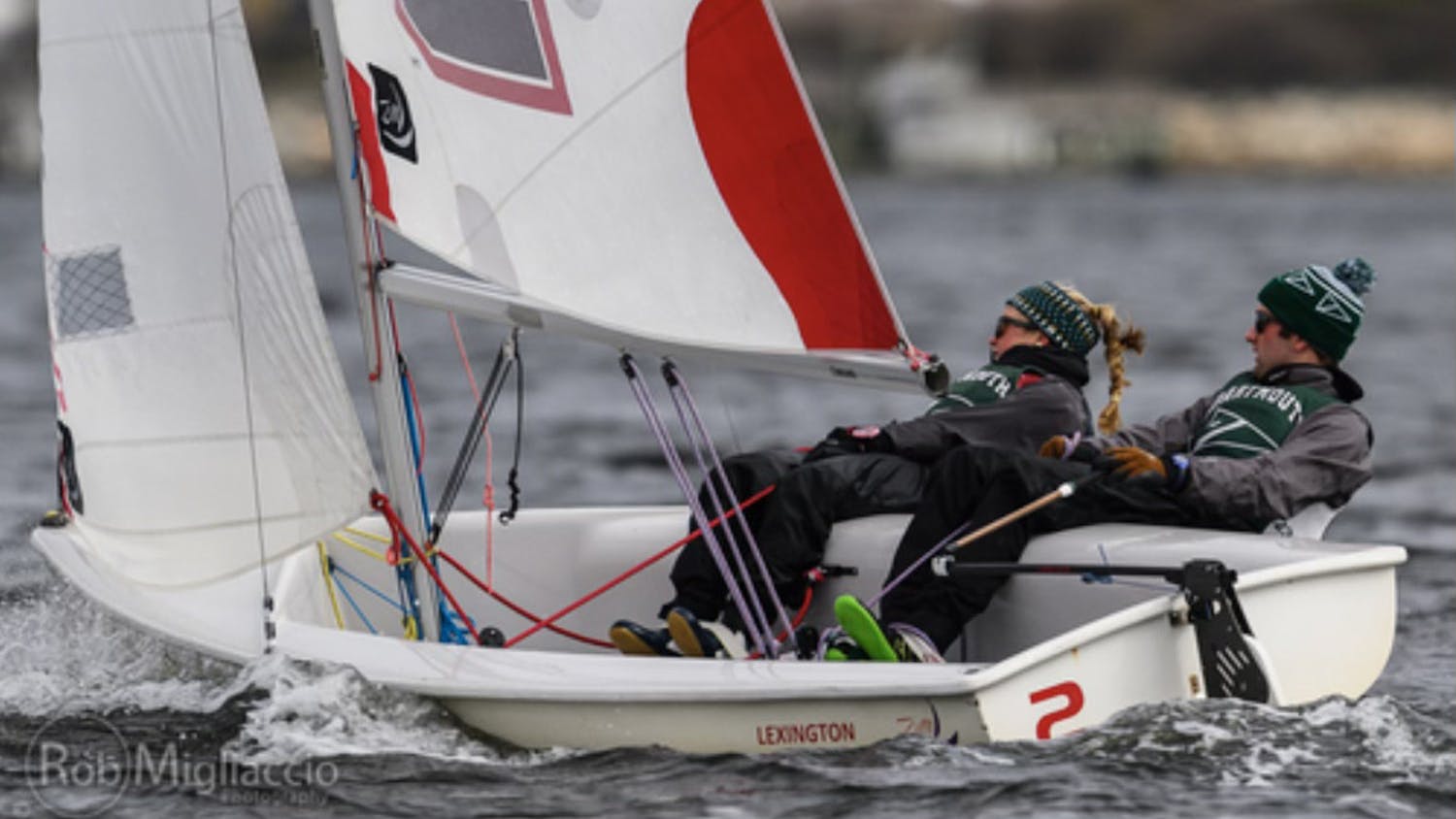This week, the Dartmouth sat down with climber Kayla Lieuw ’19. Lieuw, who hails from Potomac, Maryland, has an extensive résumé in speed climbing. She has won four youth national championships and competed with USA Climbing at the world championships in locales from Austria to Singapore.
What are the different types of climbing, and what specifically do you do?
KL: Competition climbing is broken up into three disciplines. There’s sport climbing, which is taller walls with ropes; bouldering, which is shorter walls without ropes but with pads and stuff; and then speed climbing is on a standardized wall so that there can be world records, and that’s obviously just based on time. I also do bouldering and sport climbing, but my top achievements are in speed climbing.
How did you get involved in climbing and climbing competitively?
KL: When I was eight, my mom just wanted to find something for me and my brother to do over the summer, and there was a new rock climbing gym, so I just went that one day and I was hooked. I joined the youth team shortly after, which started out as once-a-week practices, and then I just kept with it. A lot of the kids on these youth teams do competitions, so I started competing as well.
Do you do most of your climbing indoors, or do you climb outdoors as well?
KL: My best accomplishments are in speed climbing. Dartmouth doesn’t have a standardized speed wall, obviously, so these days most of the climbing I do is bouldering and sport climbing. Before I got to Dartmouth, I mostly climbed indoors all the time, but Dartmouth has a really good outdoor climbing location, Rumney, which is about 40 minutes away. Now that I’m here, in fall, I’d go to Rumney three or four days a week. In winter, I’ve been climbing in the gym.
How does climbing outdoors differ from climbing in a gym?
KL: Outdoors, the route or path is very unclear compared to indoors, because indoors there are these big holds that are taped very clearly. And generally, the style of climbing is different. Indoors, a lot of times it depends on the setter, the person who puts up the climb and the holds, but there can be more gymnastic-like movements compared to outdoors. It also depends what location you’re at. For example, I’m still learning the style at Rumney.
How has your experience climbing at Dartmouth been?
KL: It’s been really great. There are a lot of psyched undergrads and grads and locals who live around here who also use Dartmouth gym. Climbing outside in the fall, since I hadn’t been able to climb outside much before coming here, that was a really good experience. There’s a Collegiate Climbing Series run by USA Climbing, so me and Matt Rube [’19] just started a collegiate team. Technically we’re official under USA Climbing, but we’re hoping to have our first meeting and practice next week. As a collegiate team, we compete at local competitions and also Nationals every year. This year it’s in San Diego. I hope if we start a team here, it can grow.
As a climber, how do you train?
KL: It depends what season it is. Half the year for me is bouldering, and half the year is sport and speed. Right now I’m in bouldering season, which is more geared to power, whereas sport climbing is more endurance-based. So right now, I’m working on powerful moves. Obviously, climbers need to have really good finger strength, so I’ll do finger strength workouts a lot. I have a hang-board in my dorm room which I hook onto the door. And another part is cross-training and injury prevention — strengthening muscles I don’t use that much in climbing. If all the muscles I use in climbing are over-developed, I could injure something that I don’t use much.
Tell me a bit more about bouldering.
KL: Since there are shorter routes, the moves are harder compared to sport climbing. Sport climbing will be like 60 feet, but compared to bouldering, the moves are a lot easier, it’s just about endurance. Towards the top, you’re obviously going to be tired, so it’s just training to get endurance so you’re not as tired at the top after 50 feet of climbing. Bouldering isn’t about endurance — instead, there are much harder moves. In climbing, you can make the moves harder by making them farther apart or making them awkward based on the footholds or the size of the hold. Bouldering is definitely more geared toward five or six really hard moves. You need to have more strength and power. I definitely put on more muscle in bouldering season.
What do the best climbers have in common? What sets apart a good climber from a gifted climber?
KL: One of the reasons why I like climbing is because you can have completely different body types. I feel like a lot of sports have a certain body type, like gymnasts want to be short and lean. Obviously being lean and muscular isn’t bad for climbing, but I’m 5’7”, for example, and some of the girls in my category are 5-foot-nothing. They can still beat me, I can still beat them. There’s no ideal body type. But some qualities of really good climbers are body awareness — how to use your body really efficiently — and reading routes well, and keeping yourself together mentally. It’s a pretty big mind game. At bouldering competitions, there are five climbs, and you haven’t seen any of these climbs before. You just turn around and you have four or five minutes to look at the route, figure it out and try to finish it. If you, say, do badly on your first climb, you need to keep your head together through all the other climbs.
What goes through your mind before climbing a difficult route?
KL: First I look at the handholds, and I find the hand sequence — whether I’m going right or left, whether I’m going to match (meaning use a hold with both hands). Then I’ll look at the feet, and there’s a lot of little technique things you can do, like heel hooks — you put your heel on the hold to get you up. If you’re an experienced climber, you’ll be able to say, “I’m going to get a heel hook right at that foothold, when my hands are here.” In sport climbing, when you’re reading the route, you always want to see where you’re going to rest, because sport climbing is all about that endurance and making sure you have enough endurance by finding the better holds and the better positions to rest. If you’re experienced, you can definitely see what move is going to be the hardest, which is what we call the crux. Based on your own strengths and weaknesses, you can tell what’s going to be hardest.
How much of climbing is mental and how much is physical?
KL: At competitions, I’d say it’s almost fifty-fifty. My mental improvement has been the difference between being super confident and super nervous, like when I first started competing. When you’re just in the gym or outdoors, it’s not as much of a mental stress. Competitions are a pretty high stress environment, so mental strength is almost as important as physical strength. At competitions like Nationals, all of the finalists will be of the same caliber physically. The difference is who can keep it together, who has a better day.
Can you describe the feeling when you reach the top of a climb?
KL: I don’t really know how to describe that. Part of the reason I like climbing is when I’m on the wall, I can just tune out of things. Climbing is my stress relief, if I’m ever stressed with school or other things. It’s my place to go to get away from everything. If the climb is something I’ve been working on for a long time, I feel like I’ve really accomplished something. When you’re bouldering outside, you’ve literally just climbed up this huge rock. People wonder why you would spend all that effort. Sometimes there are a lot of easy ways up the rock, but when you do a hard route, you feel super accomplished. There are people at school who ask me, “Have you ever made it to the top at the gym?” Yeah, of course I have. Then they say, “Well, why do you keep climbing?” You just keep pushing yourself. It’s amazing pushing yourself, seeing how hard of moves you can do, how much stronger you can get.
Climbing can often be an individual sport. What is its social aspect like?
KL: Since I grew up with climbing, climbing has been a really big social outlet for me. I’ve competed against a lot of the same people since I was eight, so I’m best friends with people from all over the country and the world. I feel like there are never climbing competitions where people are mean and outwardly competitive. I really like the climbing community because even if you’re at Nationals and competing against them, you’re competing against your best friends, so it is sometimes like, “Oh, I really want you to do well, but I want to do well too.” But it’s never super cutthroat competition. And at Worlds, you’re on the U.S. team, so that’s another nice thing. We have team training camps to bond and train together, so it does have a team aspect too.
Have you had any frightening moments while climbing?
KL: Not really. I’ve never really gotten injured, or broken any bones, which surprises a lot of people. People have this idea that climbing is a really dangerous sport, but I feel like I’ve had friends in cheerleading or gymnastics who get injured a lot more.
If you could only climb in one place for the rest of your life, where would it be?
KL: I would say Spain — Catalonia is really good. I’ve heard that there is so much good climbing there.
What are your future climbing plans?
KL: This is my last year of youth competitions — the first weekend of February is my last bouldering youth nationals, and I’ll have my last sport climbing nationals in July. I’ll probably keep doing adult competitions, but I don’t think I would do it professionally — that is, try to make my living off climbing and just climb. I want my career to be something other than that, but I will definitely continue climbing.
You’ve given to climbing. What do you think climbing has given back to you?
KL: Resilience. You can’t give up in climbing. People will ask me, “Have you fallen?” Yes — you fall a lot, a lot more than you get to the top. It’s just not giving up. I’ve found that a lot of good climbers are often good students, because we have the same mentality with school and climbing. We just are hard workers.



